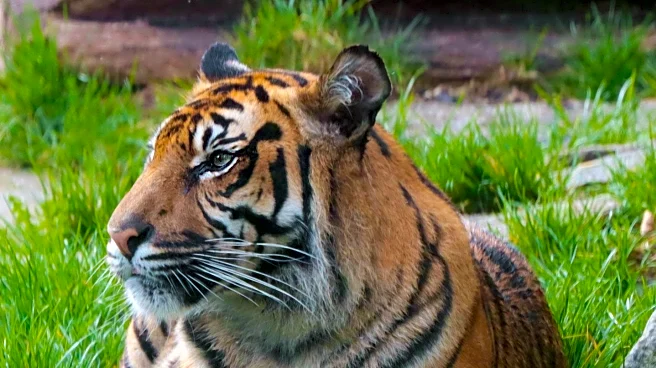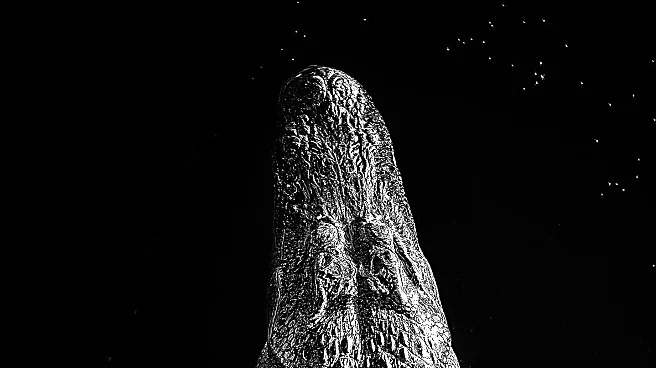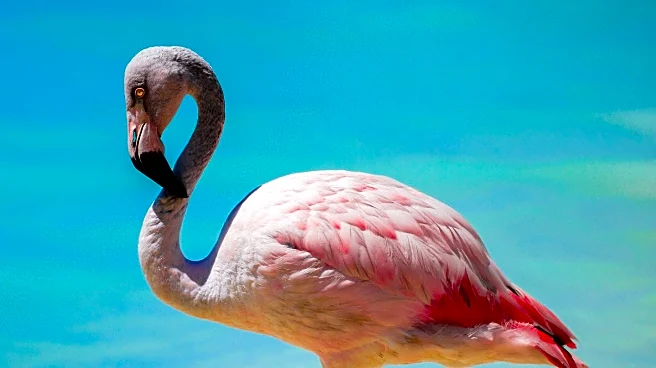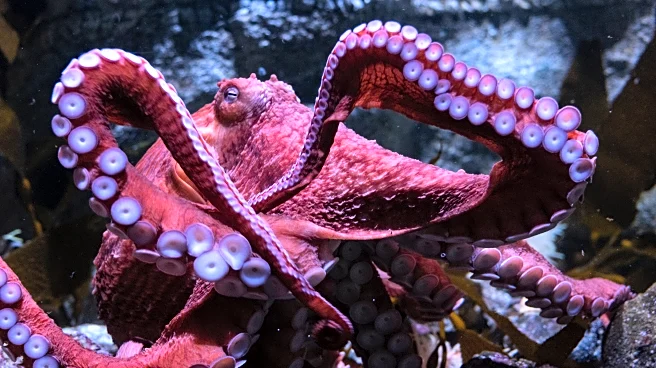What's Happening?
Katya, a 20-year-old female Amur tiger at Seneca Park Zoo, has been diagnosed with early-stage chronic kidney disease. The zoo announced this development on September 12, highlighting that Katya is the oldest Amur tiger in any zoo accredited by the Association of Zoos and Aquariums. Chronic kidney disease is a common condition in aging cats, including domestic felines. Fortunately, Katya's condition was detected early through routine bloodwork, allowing for timely intervention. Currently, she shows no outward signs of illness and remains active and cooperative. Her treatment includes increased monitoring of blood values, regular subcutaneous fluids to support hydration, and blood pressure monitoring using her tail. Previously, Katya was treated for a noncancerous bladder tumor, which is unrelated to her kidney disease.
Why It's Important?
The diagnosis of chronic kidney disease in Katya underscores the importance of routine health screenings for aging animals in captivity, which can lead to early detection and treatment of common ailments. This proactive approach can significantly enhance the quality of life and longevity of zoo animals. The case also highlights the challenges faced by critically endangered species like the Amur tiger, with fewer than 500 individuals remaining in the wild. Conservation efforts in zoos play a crucial role in preserving these species, and maintaining their health is vital for breeding and educational programs. The zoo's ability to manage Katya's health issues effectively may serve as a model for other institutions caring for aging animals.
What's Next?
Zoo officials will continue to monitor Katya's health closely, adjusting her treatment plan as necessary to manage her chronic kidney disease. This ongoing care will involve regular bloodwork and hydration support to ensure her kidneys function optimally. The zoo may also use Katya's case to educate the public about the health challenges faced by aging animals and the importance of conservation efforts for endangered species. Additionally, the zoo might collaborate with other institutions to share insights and strategies for managing similar health issues in captive animals.
Beyond the Headlines
Katya's situation brings attention to the ethical considerations of keeping aging animals in captivity, particularly those of critically endangered species. It raises questions about the balance between conservation efforts and the quality of life for individual animals. The zoo's transparent communication about Katya's health challenges and treatment reflects a commitment to animal welfare and public education. This case may prompt discussions on best practices for the care of elderly animals in zoos and the role of such institutions in global conservation strategies.












